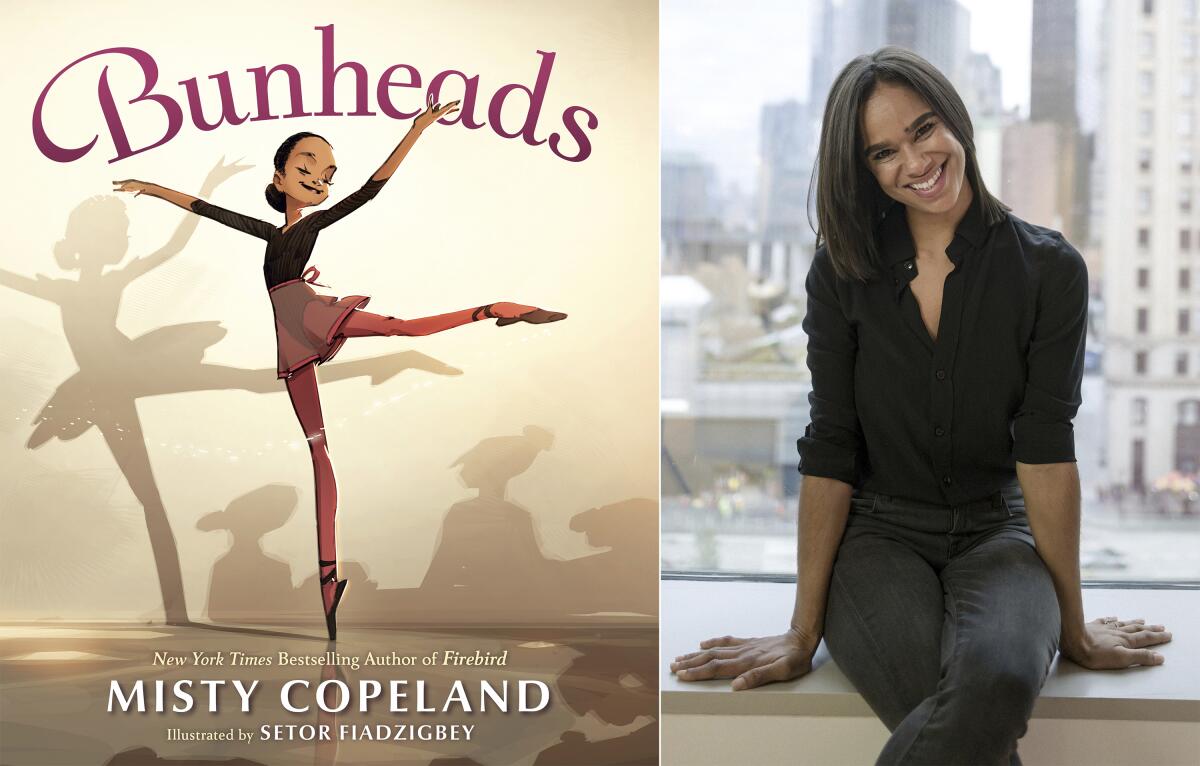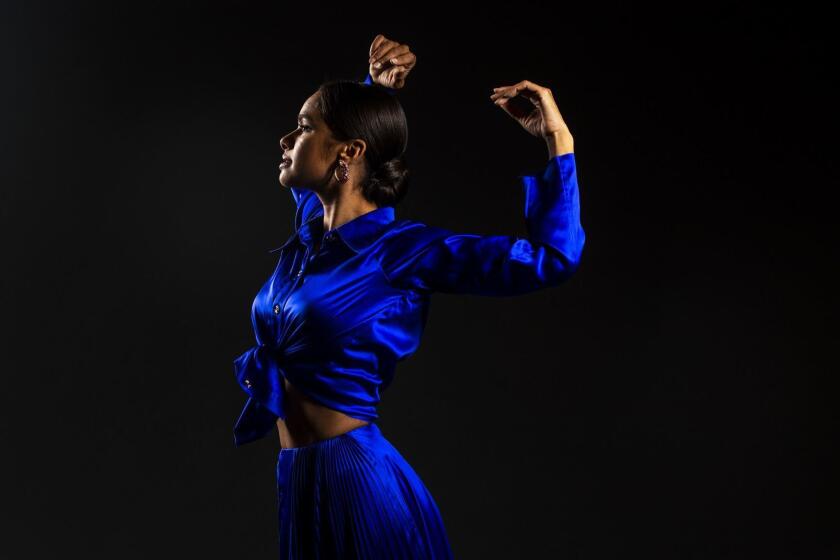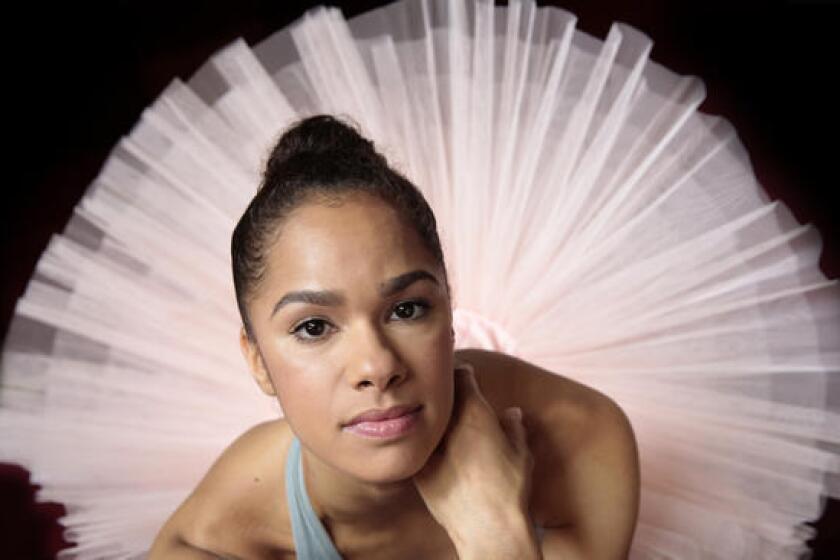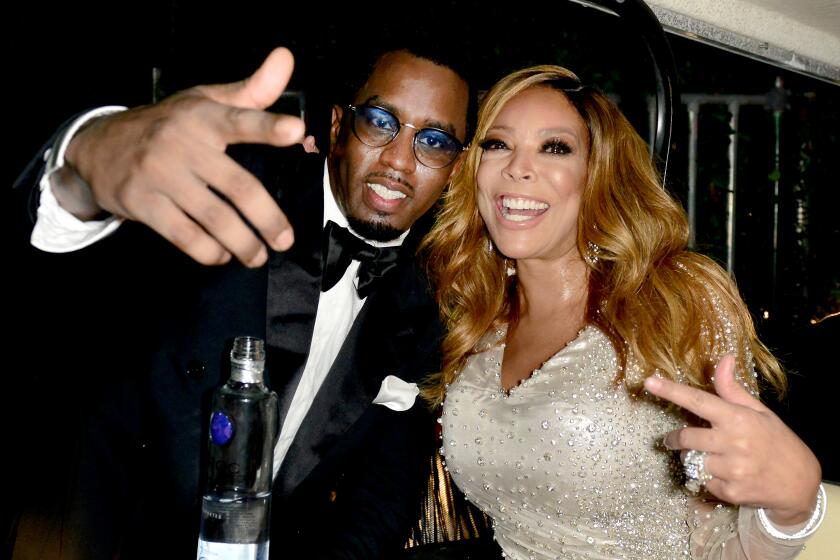Q&A: Misty Copeland looks to her youth in new kids book âBunheadsâ

NEW YORK â Misty Copeland has long told the story of her childhood ballet teacher who recognized her talent and took the young dancer, then 13, from the cramped motel room she was living in to stay in her own house for three years, so she could continue her training.
Now Miss Bradley â Cynthia Bradley â is one of the key characters in Copelandâs new childrenâs book, âBunheads,â a story based on Copelandâs own youth and introduction to ballet.
In âBunheads,â the story of young Mistyâs first ballet class and first dance production (the classic ballet âCoppeliaâ), the celebrated ballerina not only pays tribute to key figures in her youth, but explores themes of camaraderie among dancers, the need for a support system, and the importance of having the confidence to try something new. Confidence is a quality Copeland says was often lacking in her journey from a childhood of modest means in California to becoming the most famous ballerina in America â and the first Black female principal dancer at American Ballet Theatre.
Copeland sat down recently, via Zoom of course, to discuss her new book â her second childrenâs book, after âFirebirdâ â as well as what sheâs been doing during the pandemic, with theaters shut. She also spoke of the influence she hopes the Black Lives Matter movement will have on the overwhelmingly white world of classical ballet.
The interview has been edited and condensed for length.
What inspired this new book?
The characters are all people I have in my life to this day. I wanted to be able to show a perspective thatâs not often depicted in film and television and books, about the camaraderie and relationships that dancers have with each other, even from a young age. Thatâs been such a big part of my growth as an individual and as a dancer.
Whoâs the character of Cat based upon?
She was my best friend. Her name is Catalina. Sheâs a young Mexican American aspiring ballerina. I was such an introverted child. And I started ballet so late, at 13. I remember the first time I walked into the ballet studio at Miss Bradleyâs, Catalina was the first person to come to me and kind of break that ice.
Tell us about Miss Bradley.
My family was living in a motel and we were really struggling financially. It was really difficult for my mom ... with six children as a single parent, [to have] me in ballet classes. It got to a point where it was just too much. And Cynthia had no idea I was living in a motel. I told her I would have to quit, and she drove me home and was stunned by the whole situation. She had driven away after dropping me off. She turned back around. She knocked on the door and she asked my mom if I could live with her and train with her, because she had so much belief in my talent and ability to become a professional.
What are some of the themes you want to get across to young people?
Acknowledging and being OK with the fact that if you donât have the confidence to believe in yourself on your own, that itâs something that you can gain ... from having a support system around you. Itâs been difficult for me throughout my life. And I know itâs difficult for a lot of young people to accept and understand that you canât do everything on your own, and youâre going to have days when youâre not strong.
For Misty Copeland, life has come full circle.
By the way, what are âbunheadsâ?
Itâs a term of endearment. When you see those little girls, you can spot them from a mile away, they have buns on their head. Theyâre wearing their jean shorts over their tights, theyâve got to make it to class on time and donât have time to change. Those are the bunheads.
The pandemic has hit the dance world hard, as with all the arts. What have you been doing since March?
There hasnât been a lot of dancing. I experienced an injury to my back right before we went into quarantine. So a lot of this has been recovery for me physically. But itâs [also] been a moment where I could step back and really focus in a way I havenât been able to on so many projects. I have a production company. Iâm writing more books.
Most dancers have lost their income during the pandemic. It must be extremely difficult.
Dancers donât make a lot of money and we donât have the facilities to keep up our training in our homes. Weâre not getting paid when theaters are not open. [At] American Ballet Theatre in particular, a lot of dancers are foreign and so they canât go home. They canât collect unemployment. But I do see a silver lining in all of this. I feel like now is the time for us to stop and breathe ... and revamp how we connect with more people, how we reach communities that are not often included. To redefine how we reach people.
How has the dance world been affected by the current struggle for social justice, and the BLM movement?
Iâve been [long] speaking about racism in ballet, the lack of diversity. My experience is that of so many dancers who have not had their stories told. And so in this time, I feel like Iâm finally being heard. And the spotlightâs being put on the ballet world in a way that theyâre going to have to make change. I think a lot of these institutions are seen as very exclusive. Theyâre stuffy. Theyâre white. I think we can create theaters in communities where there is no more excuse for not having a venue in these places, and allowing these communities to feel like weâre a part of them.
More to Read
The biggest entertainment stories
Get our big stories about Hollywood, film, television, music, arts, culture and more right in your inbox as soon as they publish.
You may occasionally receive promotional content from the Los Angeles Times.












